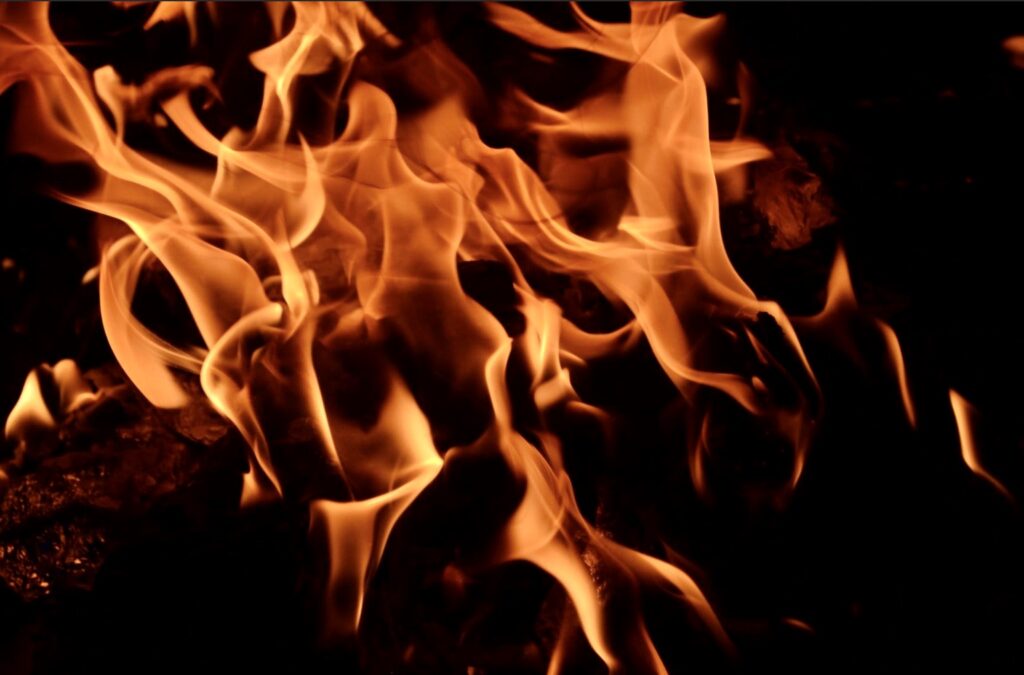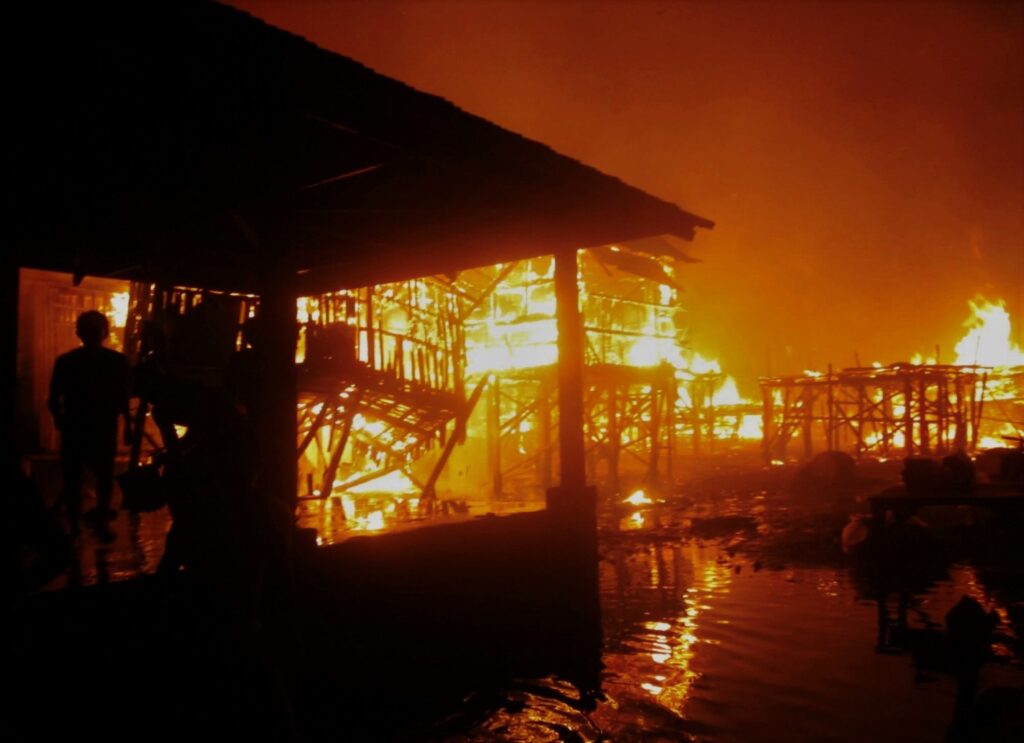Text by Henrylito D. Tacio
Photos by Henrylito D. Tacio and Darrell Blatchley
Two days before Christmas in 2017, a fire broke out at the New City Commercial Center (NCCC) Mall in Davao City. The fire raged for 31 hours; it started at 9:35 in the morning of December 23 and was declared under control at 5:15 in the morning the following day.
The fire happened in broad daylight. Was there a way some deaths could have been avoided?
It’s possible, according to the information posted by my friend, Dr. Teofredo “Ted” R. Esguerra, on his Facebook. The only flight surgeon in Southeast Asia, he has been lecturing and sharing his expertise on disaster management.
The information, taken from the website of the Tufts University in the United States, gives some basics about fire safety. First and foremost, you need to familiarize yourself with “where you are” (inside a mall, for instance). Be sure to know how to reach the two (yes, not just one!) nearest exits.
Bear this in mind, too: In a fire situation, smoke is blinding and will bank down in the rooms and hallways. To escape to safety in a situation where there is already smoke, you have to crouch or crawl.
“By always being aware of your surroundings, your knowledge of the nearest two exits, and having a plan will greatly increase your ability to deal with sudden emergencies,” the information said.
By virtue of Presidential Proclamation No. 115-A, March was declared as Fire Prevention Month because of the alarming increase of fire incidents happening across the country during this time of the year.
Imagine hearing an announcement of fire or discovering yourself a fire, what are the things you must do? Tufts University instructed: Move quickly to the nearest accessible exit (which you have already known in the beginning). If you have discovered a fire, notify and assist others to evacuate along the way. If the building fire alarm is not yet sounding, manually activate the alarm pull station located near the exit.
After doing that, get out of the building as quickly as possible. Don’t worry about some of the valuables you have left; life is more important than those materials.
More often than not, there are fire extinguishers all over the building. When should these be used, and is it alright to use them in case of fire? The information offers these tips: Only if you are trained and confident in fire extinguisher use. Only if the fire is small in size (no larger than a small trash can). If you do fight the fire, use only one extinguisher and then evacuate the building.
By the way, you are not obligated to fight fires of any size. If you have any doubt, do not attempt to fight the fire.
Just remember this: Total and immediate evacuation is the safest.
Now, what if you are caught in the middle of a smoke, what should you do? Drop to hands and knees and crawl towards the nearest exit. Stay low, as smoke will rise to the ceiling level first. Hold your breath as much as possible. Breathe through your nose and use a filter (such as a shirt, towel, or handkerchief).
During a fire incident, the number one enemy is not the fire but the smoke you get inhale. “People are scared of the flames and think it is the main killer,” Daniel D. Solana, a Davao firefighter, said. “It’s actually the lack of oxygen that will kill a person faster.”
The Merck Manual of Medical Information explains: “Inhalation of chemicals released in the smoke, such as hydrogen chloride, phosgene, sulfur dioxide, and ammonia, can swell and damage the lungs and trachea. Eventually, the small airways leading to the lung narrow, further obstructing airflow.”
Smoke can also contain chemicals that poison the body’s cells, such as carbon monoxide and cyanide. “High levels of carbon monoxide in the blood may cause confusion or disorientation or may even be fatal,” the Merck manual said.
If ever you are trapped in a room due to fire or smoke, call 911 or the emergency line in your area to report your location and conditions. Close as many doors as possible between you and the fire. Wet and place cloth material around or under the door to help prevent smoke from entering. If the room has an outside window, be prepared to signal to someone outside.
Fire, science tells us, is the visible effect of the process of combustion – a special type of chemical reaction. It occurs between oxygen in the air and some sort of fuel. The products from the chemical reaction are completely different from the starting material.


The fuel must be heated to its ignition temperature for combustion to occur. However, three things must be present in order for a fire to exist: heat, fuel and oxygen. This is known as the fire triangle, according to Sheffar S. Lajarani, who was the officer-in-charge of the Bureau of Fire Protection in Bansalan, Davao del Sur, when we interviewed her.
“Combustion is when fuel reacts with oxygen to release heat energy,” explained the website of Science Learning Hub. “Combustion can be slow or fast depending on the amount of oxygen available. Combustion that results in a flame is very fast and is called burning. Combustion can only occur between gases.”
Fuels come in three forms: solids, liquids, and gases, Lajarani pointed out. Examples of solids are wood, dried leaves, clothing materials, and books. Gasoline and kerosene are examples of liquids, while gases refer to liquified petroleum gas and methane.
Fire incidents happen all the time. Oftentimes, there are victims, and those who are directly hit are most likely to experience a fate worse than death – that of undergoing agonizing pain or burns. About 120,000 people – many of them children under five – die from fire-related burns each year, according to the World Health Organization (WHO).
Burns are classified as minor, moderate, or severe. “The severity determines how they are predicted to heal and whether complications are likely,” the Merck manual notes. “Doctors determine the severity of the burn by estimating the percentage of the body surface that has been burned.”
A burn that involves only the top layer of skin is the least severe. “The skin is red and dry and the burn hurts,” explained the book, Community First Aid and Safety. “These burns usually heal in 5-6 days and don’t leave scars.”
Deeper burns, like those experienced by my sister, are also red. “They have blisters that may open and weep clear fluid,” the book said. “The burned skin may look blotchy. These burns are usually painful and the area often swells.”
Some burns destroy all the layers of the skin and the tissues underneath. They can even destroy bones. These burns look brown or blackish. The tissues underneath may appear white. These burns can sometimes be surprisingly pain-free because nerve endings have been destroyed. These burns, however, are critical.
“A critical burn needs immediate medical attention,” the book said. “Critical burns can be life-threatening. It isn’t always easy to tell how severe a burn is right after it has happened.”
In case of fire, what can you do to save a person? The first minutes of an emergency can be critical, to say the least. Experts estimate that once the heart stops, there is a window of four to six minutes to restore circulation before brain cells begin to die.
First aid depends on the severity of the burn. A feature that appeared in Reader’s Digest shared the following rules that can be applied to mild to moderate burns:
Running cool water over a burn may alleviate some of the pain. Mild burns may be treated with burn creams – never use butter. Any burn that encircles a body part (such as a wrist or finger) or any significant burn to the face should be evaluated by a physician.
Cover burns with a sterile bandage to keep them clean and dry. If blisters form, don’t open them.
For third-degree burns, which leave skin charred and turn it white or cream-colored, take the following steps:
Call the emergency medical services in the area. Do not move the victim unless he’s still in danger. Don’t try to remove the victim’s clothing. Cover the burns by laying a clean sheet or blanket over the burned area. Protect the victim from draughts and keep him dry.
Raised burned areas above the level of the heart if possible. Monitor the victim and proceed with steps for cardiopulmonary resuscitation (CPR) if needed.
CPR is the cornerstone of emergency medicine. There are a lot of reasons why someone’s breathing or heartbeat might stop and burn is one of them. The required action is this: Put oxygen into the victim’s lungs by performing rescue breathing, and circulate it through the body by doing chest compression.
Dehydration develops in people with third-degree burns, because fluid seeps from the blood to the burned tissues. “Shock develops if dehydration is severe,” the Merck manual says. Dehydration is treated with large amounts of fluids given intravenously.
“A person who has gone into shock as a result of dehydration is also given oxygen through a face mask,” the Merck manual points out.
According to the Merck manual, first- and second-degree burns heal in days to weeks without scarring. Deep second-degree and small (less than one inch) third-degree burns take weeks to heal and usually cause scarring.
“Larger third-degree burns require skin grafting,” the Merck manual explains. “Burns that involve more than 90% of the body surface, or more than 60% in an older person, usually are fatal.” – (Additional photo by Darrell Blatchley)

